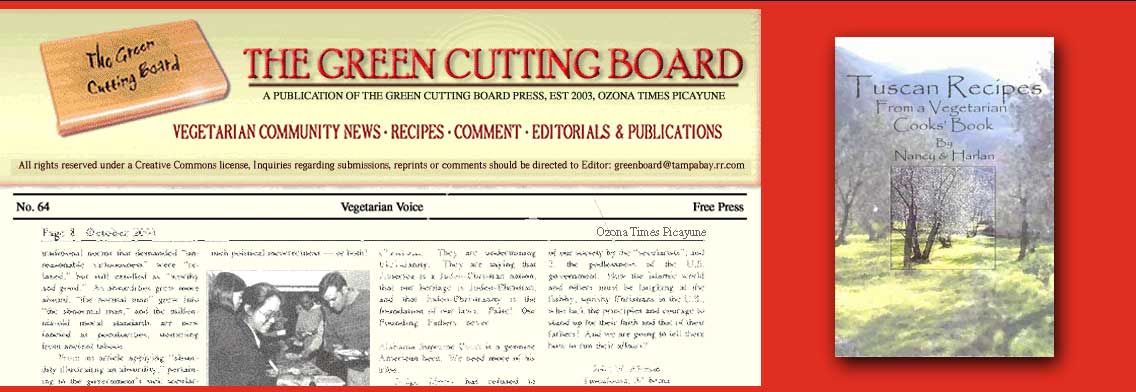Monday, June 07, 2004
Planet City in a Bowl... An Eco Town Takes Root
By the year 2007, for the first time in history, humanity will be primarily an urban species — homo sapiens urbanis.

Over 75 per cent of all North Americans and Europeans already live in cities, and in a few years most Southern citizens will have joined them. Each week another million people either move to or are born into a city. By 2015, there will be at least 23 “mega-cities” in the developing world, each with more than 10 million people.
Can the planet carry the weight of this urban sprawl? The world's cities take up just two per cent of the Earth's surface, yet account for 78 per cent of the carbon emissions from human activities — the biggest source of the greenhouse gases that contribute to global warming, says the Worldwatch Institute, a Washington, DC-based research institute.
Many cities also fail to provide decent living conditions for all their residents. Some 600 million to one billion urbanites lack adequate shelter and live without easy access to clean water, toilets or electricity.
The Ecological Footprint
Imagine if a giant glass bowl was inverted over top of a city like Montreal, Canada. Nothing but sunlight could get in. Obviously most of the people inside wouldn't survive long because the city needs food, air, places to put waste and ways to obtain other resources from outside the city limits to sustain itself.
So how much bigger would the glass bowl have to be in order for everyone in the city to survive at their present standard of living? In other words, how big is Montreal's Ecological Footprint?
William Rees at the University of British Columbia has calculated ecological footprints for a number of hot spots around the world and determined that the average North American citizen uses the natural resources from 7.7 hectares (19 acres) of land.
And so Montreal with a population of 3.5 million has a whopping footprint of 270,000 sq. km, about half the size of France, and considerably more than the 462 sq. km the city actually occupies. Similar sized cities in the US and Australia have even bigger, more unsustainable footprints.
Because material resource use is lower in the Developing World - India averages just 0.5 hectare per person - those cities have much smaller ecological impact.
The dilemma, however, is that for everyone to live at the same level of material wealth as North American city-dwellers, we'd need another three or four planets. Since good planets are hard to find, cities and towns have to better balance the demands of people with nature. They must leave smaller “ecological footprints” by using less water and generating less waste, boosting self-reliance in food and energy, and promoting sustainable transportation.
Perhaps the most unlikely place for such a green town to take root is in the brown dirt of a slum called Ivory Park in South Africa.
Ivory Park, home to 200,000 people living in shacks topped with corrugated tin roofs, lies within the town of Midrand on the outskirts of Johannesburg. It is also home to grinding poverty. As many as 50 per cent of the adults are unemployed. Children play on potholed streets, dodging streams of polluted water. A permanent cloud of hazy smoke from tin-drum coal fires used for cooking hangs heavy. Respiratory illnesses are common.
Emerging from the ruddy soil is hope — in the form of brightly coloured buildings that make up the Ivory Park EcoCity village. Here, poverty eradication and sustainable development meet in a fusion of African and Western ideas to improve life for people and the planet.
At the edge of town is a market where farmers from six co-ops sell their organic produce. Within the village, several types of environmentally friendly houses are being showcased. The community centre, used for workshops and training, is a good example of the ecological construction common in Ivory Park. The centre is a round building of clay and concrete, with used polystyrene blocks as insulation and doors salvaged from a condemned building. It has a soil roof, with grass growing on the top and sloping sides so that children can play on it. The temperature inside is always comfortable, no matter what the season, because soil has insulating properties, keeping the centre warm in winter and cool in summer.
“It's just like having air conditioning,” says Annie Sugrue, an EcoCity managing trustee.
The Ubuhle Bemvelo Eco-Construction Co-op is building 30 of the eco-houses. The 14 women working in the co-op use indigenous materials and environmental building techniques adapted to local conditions. For example, thick earthen walls absorb heat during the day and radiate it during the cool nights of winters.
The houses are purchased through a housing subsidy process, with preference given to those involved in the EcoCity. “We want people to live and work in the same place, as it cuts down on transport and pollution,” explains Sugrue.
The EcoCity was born as an experiment in alleviating poverty — and doing it without jeopardizing long-term ecological health. A non-governmental organization called Earthlife Africa first obtained a US$1.7-million grant from the Danish government in 1999. Since then, there has been funding from Canada, Switzerland and Sweden, and partnerships have been struck with the World Wildlife Fund and the United Nations Development Programme. The project is now “owned” by the Johannesburg city council, and local and foreign businesses have come to the table, as have different South African government agencies.
The project is both a showcase demonstration and a training centre, but above all it's home for its residents. Mundane but pressing facets of life must be tackled.
For instance, to cope with the endless smoke from cooking fires, an energy centre encourages people to buy cleaner liquid propane in canisters and alternative energy equipment such as solar cooking ovens. One vital development has been the so-called “smokeless umbhawula,” an innovative tin-drum coal cooker that uses far less fuel than normal, and radically reduces the amount of unhealthy smoke.
Trash is another major problem in South Africa, but a successful Ivory Park waste recycling co-operative has offered an option. Now employing more than 40 people, bottles, glass, paper, plastics and tin are brought by waste collectors to a buy-back centre, which then sorts the waste and sells it to recycling companies.
A recycling project of a different kind is housed in a big metal shipping container. The Shova Lula (easy pedal) cycle co-operative imports second-hand bikes and parts from England, Germany and Switzerland, then bicycle mechanics repair and sell the working wheels to community members.
Involving youth has been key to the accomplishments of Ivory Park. Youth work at the bicycle co-op, serve as EcoCity guides and conduct environmental education workshops in schools and the community. A new project will train one hundred youth in eco-building techniques using earth bricks and passive thermal designs. Others will learn organic landscaping and farming techniques, and how to build biogas digesters that convert food and animal wastes into a clean fuel for cooking.
“The focus of the project is on self reliance,” says Annie Sugrue. “South Africa has serious economic problems and at present cannot provide all the social services people need like electricity, clean water and sanitation. The poor feel they have little power to change things so they sit around and hope someone will come along and save them.”
“That's not going to happen.”
But community members do realize that a village needs to be sustainable and self-reliant — traditional African values. “The EcoCity concept has been very well received by local people,” Sugrue says. However, the project is still heavily dependent on outside support.
Despite this, Ivory Park's ecovillage is expanding. More homes are being built, and initiatives such as large-scale biofuel production are on the horizon. Just as important, tens of thousands of people have visited the village, particularly during the World Summit on Sustainable Development in 2002, held in Johannesburg.
And good ideas travel: ecovillages are growing in South Africa and elsewhere.
In Senegal, for instance, 12 villages are being transformed into greener communities. Governed through community-based decision-making, the hearts of these villages beat with organic agriculture, solar energy and micro-enterprise economic development.
Internationally, an informal collection called the Global Ecovillage Network encompasses hundreds of small communities in Europe, North America and Asia. Some of these started in the 1960s as communes, and all are pursuing the objective of creating a better quality of life while living lighter on the planet.
At the larger end of the scale, many cities are seeking a greener future as well. The International Council for Local Environmental Initiatives, with over 2,000 member municipalities, is active in helping cities become more sustainable.
One member, Melbourne, Australia, home to 3.4 million people, is on target to eliminate its contribution of greenhouse gases by 2020. With comprehensive energy reductions of 50 per cent, the use of renewable energy and the absorption of local emissions in widely sowed native vegetation, Melbourne will likely be the first industrial city to achieve zero-net emissions.
And who knows what on earth Ivory Park will have accomplished by then.
by Stephen Leahy
International Development and Environment Article Service
|
|
|
|
|
Comments:
Post a Comment













